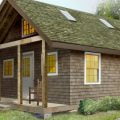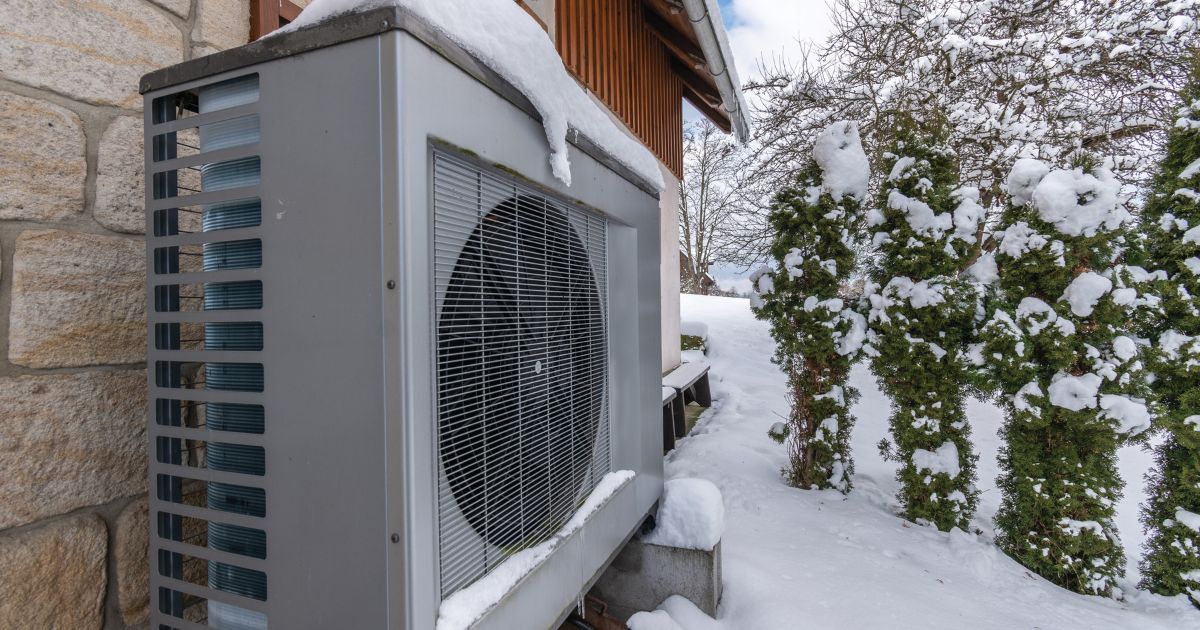In the late spring of 2020, Aurora Debreuil and Adam Gualtieri bought a rundown 1970s-era cabin in the woods. The 20-somethings were new to home ownership, didn’t have a vehicle and were self-described reno rookies.
Fast forward three years and the couple has completely replaced a fully-rotten wall, has dozens of DIY home improvement projects under their belt, started their first food garden, moved out of their apartment in the city — and documented it all on YouTube and TikTok.
The cabin is located on the southern portion of Lake Winnipeg just north of Winnipeg on Treaty 1 Territory. A short stroll from a beautiful sandy beach, the 750-square-foot cabin is nestled in a small loop of cabins in the Manitoba forest. Nearby are wetlands, boardwalk trails, and lots of farmland.
Harrowsmith caught up with Aurora and Adam to learn more about their off-grid adventures.

Harrowsmith: Why was it important for you both to find a cabin in the woods?
Aurora & Adam: While our search for a cabin started off rather innocently and wasn’t a mission to find one, we both grew up with fond memories of cabin living. At age 5, Adam’s parents purchased a small cabin nestled in the forest on beautiful Lake Superior, and it quickly grew to become his favourite spot in the summers. And while his brothers grew older and wanted to spend their teenage years in the city, Adam continued to spend as much time as he could at camp; swimming, photographing nature, having bonfires, fishing with his father (or at least trying), and admiring every single golden sky sunset. Aurora was born and raised in a small rural prairie town in a 120+-year-old farmhouse surrounded by large, beautiful trees, a cozy
wood stove, and arguably Canada’s best sunsets. In other words, simple living (which we found out isn’t so simple) is something we adore and find happiness in.
H: What were your criteria for finding a cabin?
A&A: For both of us, it was important that the cabin wasn’t located more than an hour from the city so that we could visit it as often as possible. Anything beyond that was a commute too long for evening visits and friends and family to stop in. We wanted a place that needed some love and was a canvas for ‘making it our own.’ Big windows, lots of trees, and an indoor washroom were also a major bonus!
H: How did you know the one was the right one for you?
A&A: To be honest, this one caught Adam’s eye right away online, but we both felt it was too nice and a bit out of our price range at first glance. But after a terrible first experience making offers on another cabin, we decided to look at this one. For Adam, it was the beautiful big windows and cedar walls. For Aurora, it required the perfect amount of work to make it our own, but it was a great layout and shape to work off of.

H: What was it like when you saw it?
A&A: When we first looked at the cabin, from a first glance, it seemed to have no issues. But it quickly became apparent that there was extensive water damage and rot in both the roof and walls. There were leaking pipes beneath the cabin, and the interior needed some serious love. Everything was left as is. When you entered the cabin, some folks might have been scared off by the abundance of stuff left throughout the cabin, but we were quickly able to see past that and see the potential.
H: Could you use it immediately?
A&A: Technically, yes. However, we did need to have the well water tested and the leaks fixed before truly spending time there.

H: What kind of DIY projects did you need to tackle first, inside and out?
A&A: The very first thing we did was rent a cargo van — at the time, we didn’t own our own vehicle — and fill it to the roof with the previous owner’s belongings and furniture we no longer wanted and could donate. The goal of this was not only to make the space feel bigger but to be able to assess the damage beneath the area rugs and couches and get a better sense of what to prioritize. Pulling back a massive tartan casino-inspired carpet in the main living area revealed that the leaking roof was not minor.
The plywood floors had endured a massive leak of some sort. Once we cleared out the space and exposed the bones, we began priming the bare spots of the floors to hopefully protect them from any further water damage and also prep them for eventually painting them a nice bright shade of white. And while we were eager to dive into all sorts of cosmetic changes, every single visit to the cabin began with Adam standing on an old wooden chair to check and see if the darkened cedar boards beneath the ceiling skylight were wet from
recent rain. And nearly every single time, they were soaked, slimy, and worried us both quite a bit. The big fear was that the leak we were assured had been fixed was in fact, still leaking.
H: How did you know how to do these things?
A&A: Short answer: we didn’t know how to. Every single thing we did, apart from cleaning a fridge or using a
paintbrush, was a first for us. We began subscribing to a ton of new YouTube channels with younger couples who were fixing up their cabin. Aurora spent a ton of time pinning inspirations on Pinterest, and Adam would read forums and blogs on DIY projects…as well as contact nearly every single contractor or handyman in the area for quotes on repairs.

H: What were/are the challenges?
A&A: The biggest challenge was not knowing what we were doing, especially with the bigger issues. It is one thing to paint a cupboard or hang a photo. It’s another to be standing face-to-face with a leaking skylight and a structural wall that moves when you push on it. So, deciphering when to try it ourselves and when to bring on professionals was intimidating — especially when you’ve made your biggest financial purchase to date and are hoping to minimize costs.
But beyond that, the challenges were endless. Firstly, we didn’t own a car for the first two years. This meant
renting a car every time we visited the cabin. And we visited a lot. We would spend late evenings after work driving out and painting the floors, cabinets, you name it. Then, of course, was the challenge of the pandemic. Suddenly lumber prices tripled, and supply chain issues led to many things we were looking to
purchase being back-ordered. Even going to the hardware store became difficult — sometimes waiting 45
minutes in line to enter, given the lower capacity. It also made it difficult for friends or family to see all the work we were so proudly doing — that’s where the vlogging and documenting the journey stemmed from! But the biggest thing we have learned is that most things that seem daunting when it comes to renovations or homeownership are only challenging until you do them once. For us, they were all things we had never done before. Still, whether it’s getting a mortgage, tearing down walls, cutting down trees, or tiling a wood stove hearth, if you go for it and remain open (or try to be) to the inevitable mistakes and missteps, everything is doable!
H: What projects are you working on now?
A&A: This summer, we lived at our cabin full-time. With that, we said goodbye to laundry machines, dishwashers, grocery stores, and the biggest – the internet. We are excited to grow our first vegetable and herb garden. We also plan to build a woodshed, level the sinking corners of the cabin, nurture our brand-new trees, and even build some furniture.

H: Where can Harrowsmith read ers follow along on your adventures?
A&A: Folks can follow us on You- Tube @auroraadam, on TikTok @auroraandadam and here in future issues of Harrowsmith Magazine.













